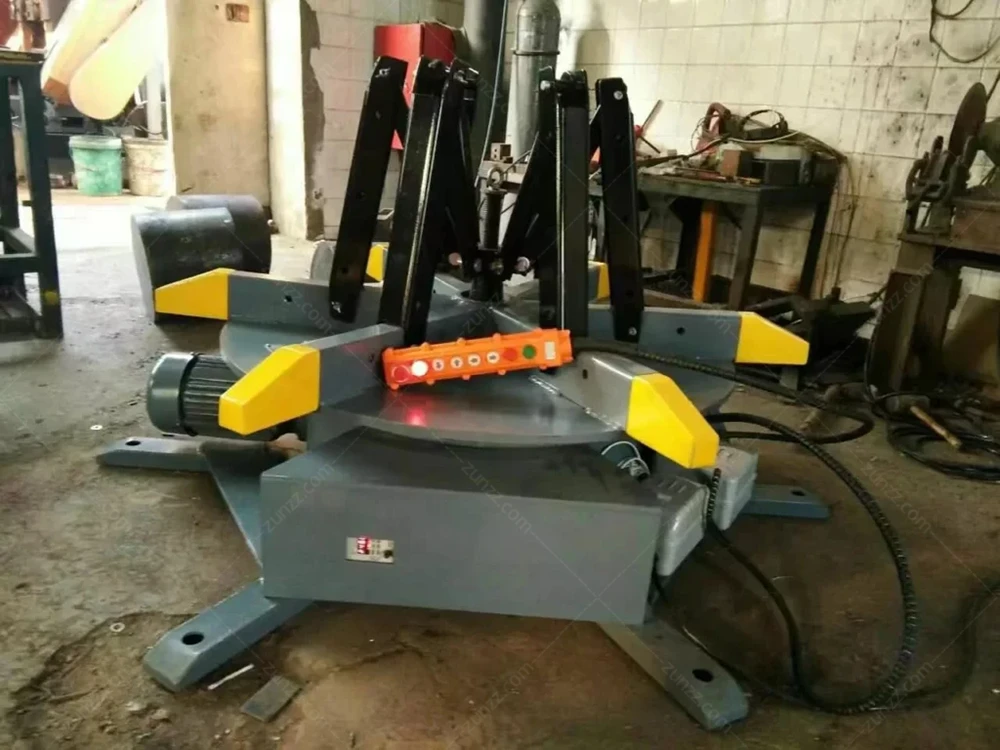03 Jun Common Questions and Answers for Wire Rope Reeling Machine
In the process of steel wire rope construction and application, the steel wire rope reeling machine plays a crucial role as an important auxiliary equipment. However, due to factors such as on-site environment, operating habits, and equipment structure, the unwinding machine may encounter some problems during use. We will categorize and list common problems below, and provide targeted solutions to help users ensure construction efficiency and equipment stability.
1. The steel wire rope is not smoothly pulled out, tangled
During the unwinding process, the steel wire rope suddenly becomes tangled, knotted, or twisted, affecting the efficiency of the rope and even causing damage to the steel wire rope.
Cause analysis:
The initial arrangement of the steel wire rope is not neat;
The unwinding speed does not match the rope release speed;
Lack of rope guide device or severe wear of rope guide;
The rope reel is not placed horizontally or the bracket is tilted.
resolvent:
Before use, reorganize the wire rope reel to ensure a compact and neat arrangement;
Install guide wheels or rope guides to ensure stable rope direction;
Check if the bracket is level and use shims to level it if necessary;
Control the unwinding rhythm to ensure smooth coordination with downstream construction equipment.

2. The Reeling machine rotates with a lag or does not rotate
Cause analysis:
Insufficient lubrication of the shaft leads to wear and jamming;
Bearing damage or corrosion;
The reel is too heavy and exceeds the equipment’s carrying capacity;
Foreign objects are stuck inside the rotating mechanism.
resolvent:
Regularly add lubricating oil or grease to reduce friction;
Replace damaged or corroded bearing parts;
Reasonably select according to the weight of the reel to avoid overload;
Stop the machine and check if there are any foreign objects inside the equipment, and clean them up in a timely manner.
3. Loose strands, deformation or damage of steel wire rope
Cause analysis:
When the rope is pulled out, the speed is too fast, causing sudden force on the rope body;
Excessive friction at the contact area between the steel wire rope, guide wheel, and bracket;
The surface of the guide pulley is rough or has burrs;
The rope reel rotates unevenly, causing jumping.
resolvent:
Control the unwinding speed to avoid rapid loosening of the steel wire rope;
Replace or polish the guide pulley to maintain a smooth surface;
Use rubber or nylon pads to reduce the friction of steel wire ropes;
Check if there is any jumping or imbalance on the turntable, and correct it if necessary.
4. Tension control failure or rope sliding
In situations where tension control is required, the tension of the steel wire rope fluctuates and the output of the rope is unstable.
Cause analysis:
The tension device is not adjusted properly;
The friction plate of the tensioner is aging or loose;
The rope diameter does not match, resulting in inaccurate control of the tension device;
The transmission gap between the tension mechanism and the reel is too large.
resolvent:
Reset the tension parameters based on the diameter of the steel wire rope;
Check the condition of the tensioner friction plate and replace it in a timely manner;
Use adjustable tension devices to adapt to multiple rope diameters;
Regularly check the sensitivity of the tension adjustment system before leaving the factory or during use of the equipment.

5. The reel bounces or the bracket shakes
During the operation of the equipment, unstable shaking occurs at the bottom of the unwinding machine, even causing displacement of the entire equipment.
Cause analysis:
The uneven ground results in uneven stress on the bracket;
The axis of the reel is not aligned, causing eccentric rotation;
The foundation is not firmly fixed, and the base structure is loose;
The outer diameter of the reel is irregular or not securely fastened.
resolvent:
Place the device on a solid and level foundation;
Adjust the bracket with a level to ensure that the central axis is vertical;
If it is a mobile device, the swivel wheel or foot should be locked before use;
Ensure that the reel is securely installed and does not shake.
6. Electric wire rope reeling machine has difficulty starting or motor overheating (electric type)
The wire rope coiling machine struggles to start and the motor temperature rises abnormally after operation.
Cause analysis:
There is a blockage between the motor and the drum;
Voltage instability or insufficient power;
Long term continuous operation overload;
Motor heat dissipation holes are blocked or the fan is malfunctioning.
resolvent:
Check the transmission parts of the motor, remove foreign objects, and maintain lubrication;
Check the power supply system to ensure stable voltage and power matching;
Reasonably arrange work hours to avoid overloading and continuous operations;
Clean the heat dissipation holes and replace the faulty fan to ensure good heat dissipation of the motor.
7. Shortened service life or frequent maintenance
The wire rope reeling machine has frequent malfunctions, short service life, and high maintenance costs.
Cause analysis:
Failure to maintain regularly and inadequate lubrication;
Improper operation, such as overloading or strong pulling;
The usage environment is harsh, such as long-term erosion by sediment and rainwater;
Using mismatched wire rope reel models.
resolvent:
Establish a regular maintenance plan for equipment, including cleaning, fastening, and lubrication;
Strictly follow the operating instructions to avoid human damage;
Try to use it in a dry and clean environment, and wipe it promptly after rain;
Select the matching wire rope reel and rope diameter based on the technical parameters of the equipment.
Conclusion
As an indispensable and important equipment in the construction process, the correct use and maintenance of the wire rope unwinding machine are particularly crucial. By recognizing and promptly addressing common issues, not only can the normal operation of equipment be ensured, but the service life and safety performance of steel wire ropes can also be improved. It is recommended that users combine the manufacturer’s operation manual in daily use, regularly train operators, and improve overall usage management level. In case of special malfunctions that cannot be resolved, it is recommended to promptly contact the equipment manufacturer or professional technical personnel for assistance in handling.



